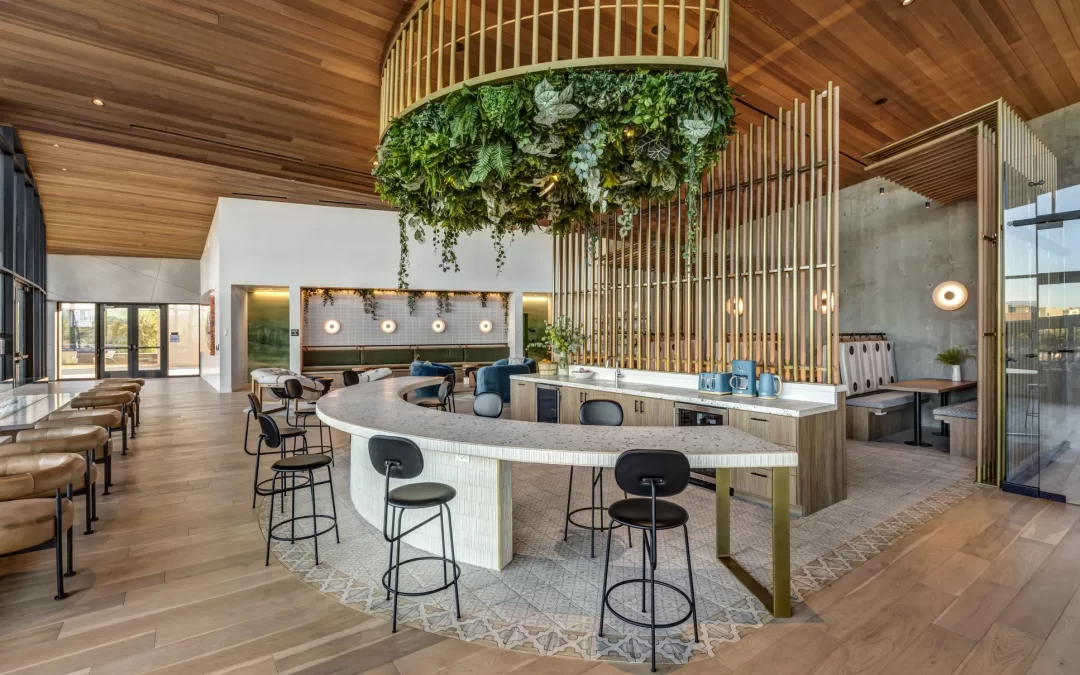Refined Lobby Entry Features in Hospitality: Elevating Guest First Impressions
In the world of hospitality, a guest’s journey begins the moment they step through the door. The lobby is more than just a transitional space; it serves as a canvas for expressing a brand’s ethos and setting the ambiance for an entire stay. Refined lobby entry features are pivotal in crafting not only memorable first impressions but also lasting ones. These elements blend innovative architecture, interior design, and curated experiences to captivate guests right from the start.
The Importance of a Welcoming Lobby
The hospitality industry thrives on experiences. Guests choose hotels and resorts not just for accommodation but for the way these spaces make them feel. A thoughtfully designed lobby is the gateway to a facility’s offerings and can significantly influence a guest’s perception and satisfaction.
From an architectural standpoint, the lobby should seamlessly integrate with the building’s overall design, creating a coherent visual language that speaks to the brand’s identity. Whether it’s a grand, opulent entryway or a sleek, minimalist space, the design elements should resonate with the target clientele and the unique character of the location.
Key Elements of Refined Lobby Entry Design
Architectural Elements
The architecture of a lobby sets the framework for its aesthetic and functionality. High ceilings, expansive windows, and open layouts convey a sense of grandeur and airiness. Utilizing natural light not only reduces reliance on artificial lighting but also connects guests with the outside environment, enhancing comfort and wellbeing.
Interior Design and Furnishings
The choice of furnishings plays a crucial role in crafting a guest’s initial impression. High-quality materials, plush seating, and well-coordinated color palettes contribute to a luxurious feel. Furniture should be arranged to encourage both communal interaction and personal space, catering to a variety of guest preferences.
Lighting
Lighting is a powerful design tool that shapes the atmosphere and mood of a space. A layered lighting approach can add depth and interest; ambient lighting provides general illumination, accent lighting highlights architectural features or art, and task lighting ensures practical functionality where needed.
Technology Integration
Modern lobby designs incorporate cutting-edge technology to enhance guest experiences. Digital concierge services, interactive displays, and smart check-in solutions streamline processes while offering personalized services. This blend of technology and design facilitates a seamless experience, catering to tech-savvy travelers.
Artwork and Decor
Incorporating artwork and decor that reflect local culture or the hotel’s brand story enriches the guest’s experience. These elements act as conversational pieces, adding character and depth. Art installations, sculptures, and themed decor can transform a lobby into a gallery-like space, inviting exploration and engagement.
Creating a Cohesive Guest Experience
A refined lobby does more than impress visually; it serves as an experiential touchpoint that aligns with the overall guest journey. The transition from entry to other functional spaces—such as restaurants, bars, or spas—should be intuitive and fluid. Signage, lighting, and spatial layout all play critical roles in guiding guests effortlessly through the space.
Additionally, incorporating elements like aromatic diffusions or background music can subtly enhance the atmosphere, engaging guests’ senses in a multi-dimensional way. Such sensory details reinforce brand identity and impact guest memory and perception.
Case Study: The Lobby at The Ritz-Carlton, Kyoto
The Ritz-Carlton, Kyoto offers an exemplary model of refined lobby design. The lobby melds traditional Japanese architecture with modern luxury, featuring high ceilings, river views, and delicate furnishings. Artisanal crafts and local artwork are seamlessly integrated, embodying the spirit of Kyoto’s rich cultural heritage. This blend of tradition and modern luxury establishes a serene yet sophisticated ambiance that resonates with international and local guests alike, reinforcing the brand’s dedication to cultural attunement and luxury.
Conclusion
A refined lobby entry is both a strategic asset and a storytelling vehicle. Thoughtful design choices create spaces that are not only visually appealing but also functionally adept and emotionally engaging. In the competitive landscape of hospitality, a lobby that captivates and comforts guests can differentiate a brand, foster loyalty, and become a hallmark of the guest experience. By honing these entry experiences, hospitality brands can set the stage for exceptional stays that guests remember long after their visit.



